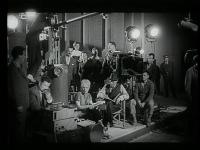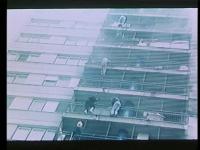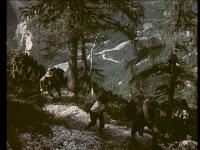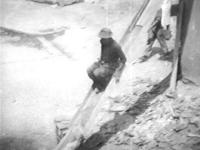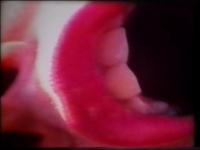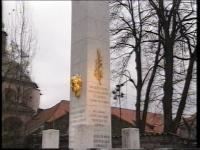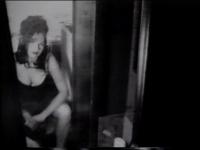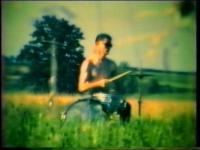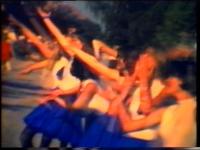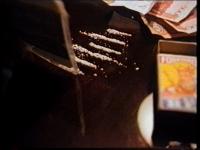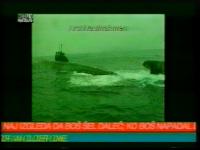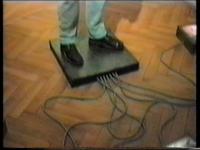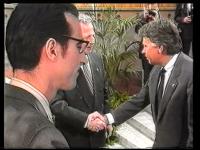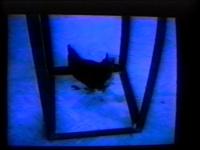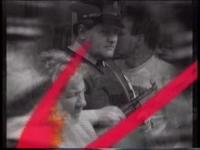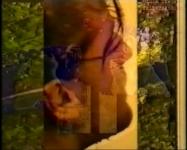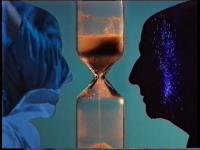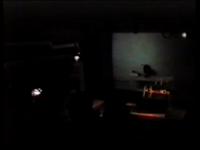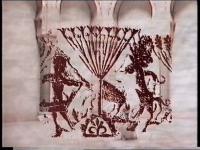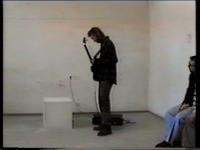In 1999, Bratko Bibič and his colleagues began editing, recycling, adapting ... archived silent and sound, completely ignored contributions of Slovenian and other filmmakers to the history of local mentalities. He decided to immerse himself in the cinematographic tradition of Slovenes from 1905 onwards, starting at the source of world film history: composing and performing live music at screenings of the first and second part of the music and film project under the auspices of Bridko Bebič's Traveling Cinema. The title of the project In the Family Garden is based on the archival title of one of the first three films made in Slovenia and has the character of 'work in process'. Individual parts of this project divide the history of the film on the one hand, and the film on history and topicality into three major time periods on the other: part 1 from 1905 to 1941, with an emphasis on the 1930s; Part 2 from 1945 to the early 1960s, but with a focus on the late 1940s and early 1950s, Part 3 from the early 1960s onwards, with a focus on the 1970s and 1980s. In 2005, all the works are combined into an integral version of the project, which is dedicated to the 100th anniversary of Slovenian film.
In 1906, the pioneer of Slovenian film, dr. Karol Grassmann made a less than a minute long film In the Family Garden (Na domačem vrtu). 100 years later, Bratko Bibič chooses it for the introductory sequence of the more than two-hour integral version of the eponymous film compilation or montage of excerpts from documentaries, reportage, feature, silent and audio recordings made by Slovenian filmmakers at home and abroad. However, in Bibič's In the Family Garden it is not a simple series of selected images that would give a historical overview of Slovenian film. On the contrary: according to the principle of creative montage, the author connects the selected 'images of attractions' into a completely new 'attractive image', into an original film story. In the Family Garden tells a kind of ‘documented’ story about history and its meanings through archival film footage. With this kind of commemoration of history on the basis of film images - without which many of them might be forgotten in the Film Archives of Slovenia - Bratko Bibič reveals the concept of his musical-film authorship: In the Family Garden, according to the principle of discovering archival film footage - as the author's research work and progress project - develops into a kind of spectator film.
In the first part of In the Family Garden (1999), we are first taken from Grossmann's home garden to a distant world. Božidar Jakac's camera shows us America, from where we return to Europe, to Nazi Germany for the opening of the Frankfurt-Darmstadt highway, as recorded by dr. Mario Foerster. Then we recognize Ljubljana by a tram, from where unsuspecting residents carelessly went to the mountains, as shown In the Kingdom of the Golden Horn (V kraljestvu zlatoroga), the famous film by Janko Ravnik, while footage of the demolition of the Ljubljana Hotel Malič already predicts the future of war ... (Source: DVD booklet In the Family Garden 1-3)
Production: Zavod Alcedo, Slovenska kinoteka, Filmski arhiv RS, 2005
In the first half of 2004, Bratko Bibič and his collaborators produced the third part of the film-music series In the Family Garden, which has been produced since 1999 and ended on the occasion of the 100th anniversary of Slovenian and 110th anniversary...
Production: Zavod Alcedo, Slovenska kinoteka, Filmski arhiv RS, 2004
In 1999, Bratko Bibič and his colleagues began editing, recycling, adapting ... archived silent and sound, completely ignored contributions of Slovenian and other filmmakers to the history of local mentalities. He decided to immerse himself in the cinema...

